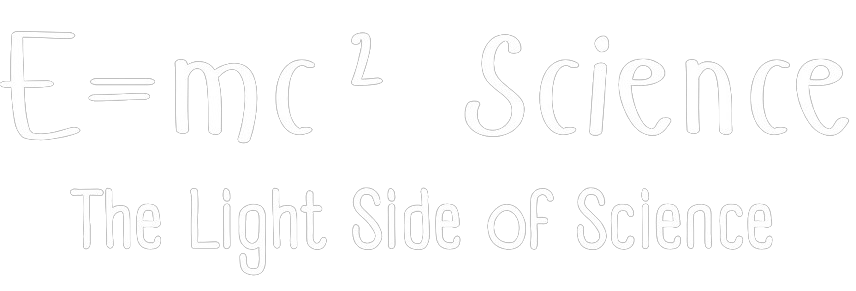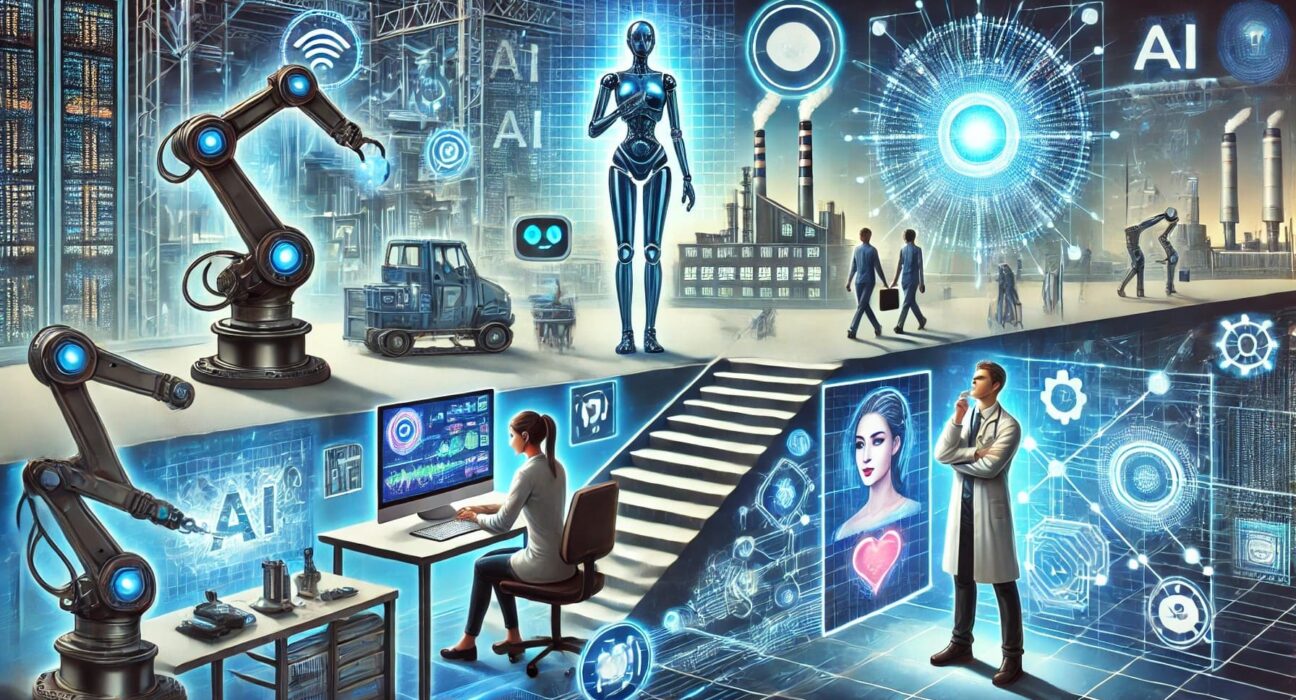Artificial Intelligence (AI) is becoming the star of the show in our daily lives, from virtual assistants that cater to our commands to recommendation systems that guess our preferences with uncanny accuracy. But as we marvel at these technological wonders, we must also face the ethical challenges they bring. Let’s embark on a fun and enlightening journey, exploring privacy concerns, tackling algorithmic bias, and discovering how smart policies can ensure that AI is our fair and safe ally.
What is Artificial Intelligence?
Artificial intelligence (AI) is a fascinating field of computer science that aims to create machines capable of performing tasks that would typically require human intelligence.
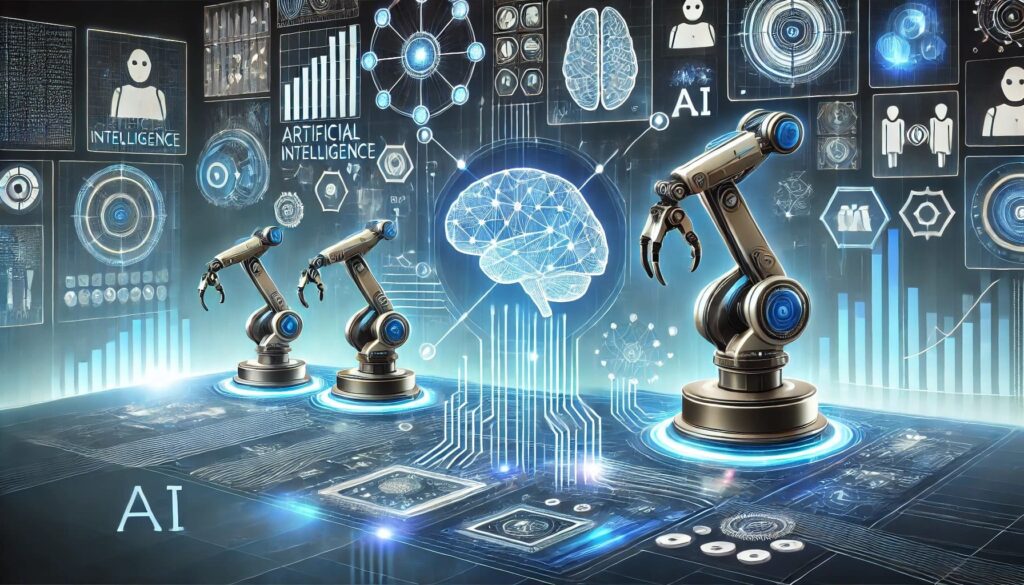
But what exactly does it mean to be “intelligent” in the context of machines?
Simply put, AI is the science and engineering of creating intelligent machines, especially intelligent computer programs.
Definition and Basic Concepts
One of the clearest definitions of AI is that it involves creating systems that can perform tasks such as speech recognition, decision-making, language translation, and much more.
AI is “artificial” because it is created by humans, unlike natural intelligence that arises from biological or evolutionary processes.
For example, when a computer is programmed to play chess and can defeat human champions, we are witnessing AI in action.
These systems are designed to learn from data, improve their capabilities over time, and perform complex tasks without continuous human intervention.
Techniques and Approaches
The concept of AI also encompasses a wide range of techniques and approaches, from simple programming rules to complex neural networks that mimic how the human brain works.
Alan Turing, one of the pioneers in the field of computing, proposed a famous test to determine a machine’s intelligence, known as the Turing Test.
If a machine can trick a human into believing they are conversing with another human, then it can be considered intelligent [3].
Philosophical and Practical Questions
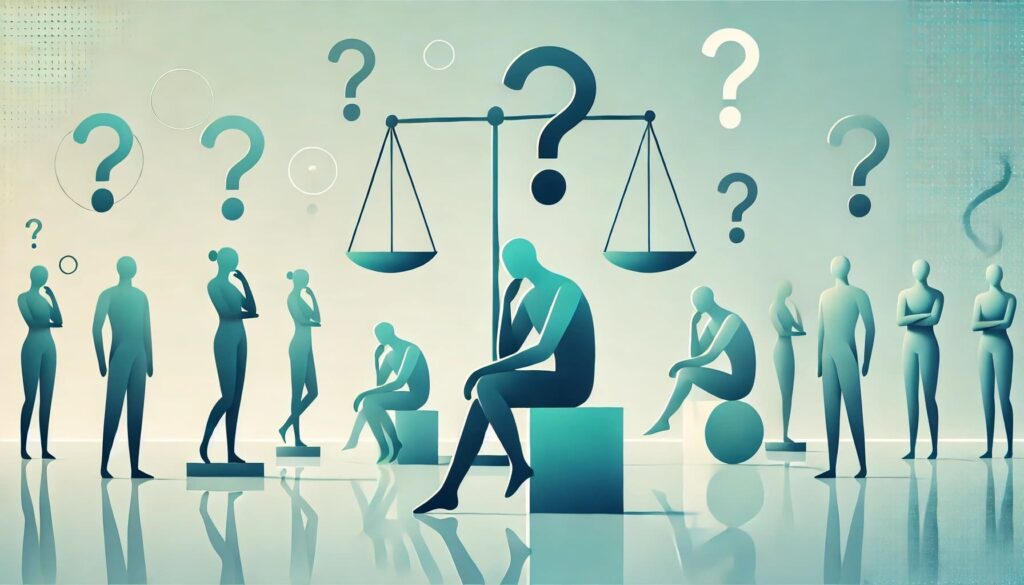
The Turing Test, while straightforward, raises many philosophical and practical questions about what it truly means to “understand” or “think”.
This aspect of AI continues to be a subject of debate among researchers and ethicists, as it touches upon the very nature of consciousness and the potential for machines to possess or simulate human-like understanding.
History and Evolution of AI
The history of artificial intelligence (AI) is rich and full of significant milestones that have shaped the technology we know today.
Beginnings in the 1950s
It all began in the 1950s when computing pioneers such as Alan Turing and John McCarthy laid the groundwork for the field of AI.
Turing, known for his work in cryptography during World War II, proposed the idea of machines that could think like humans.
McCarthy, on the other hand, coined the term “artificial intelligence” and organized the Dartmouth Conference in 1956, considered the official birth of AI as a research field [4, 5].
Developments in the 1960s and 1970s
During the 1960s and 1970s, AI experienced a period of enthusiasm and investment, with significant developments in rule-based systems and symbolic programming.
However, the lack of computational power and the complexity of the problems to be solved led to a period known as the “AI Winter,” where interest and funding decreased.
Despite this, fundamental research continued, including the development of the perceptron by Frank Rosenblatt, which attempted to mimic human neural networks for pattern classification.
Resurgence in the 1980s and 1990s
AI’s resurgence came in the 1980s and 1990s, with advances in neural networks and machine learning algorithms.
Increased computational power and the availability of large volumes of data spurred research and development.
From the 2000s onwards, with the advent of deep learning, AI began to achieve impressive feats such as speech and image recognition, automatic translation, and even defeating human champions in complex games like chess and Go.
Today, AI continues to evolve rapidly, driven by innovations in hardware, more sophisticated algorithms, and applications across a wide range of industries.
AI in Everyday Life: Practical Applications
The increasing presence of artificial intelligence in our daily lives is simplifying tasks and improving efficiency in various areas [6].
Let’s explore three practical applications of AI that are transforming our daily routines: virtual assistants, content recommendations, and medical diagnostics.
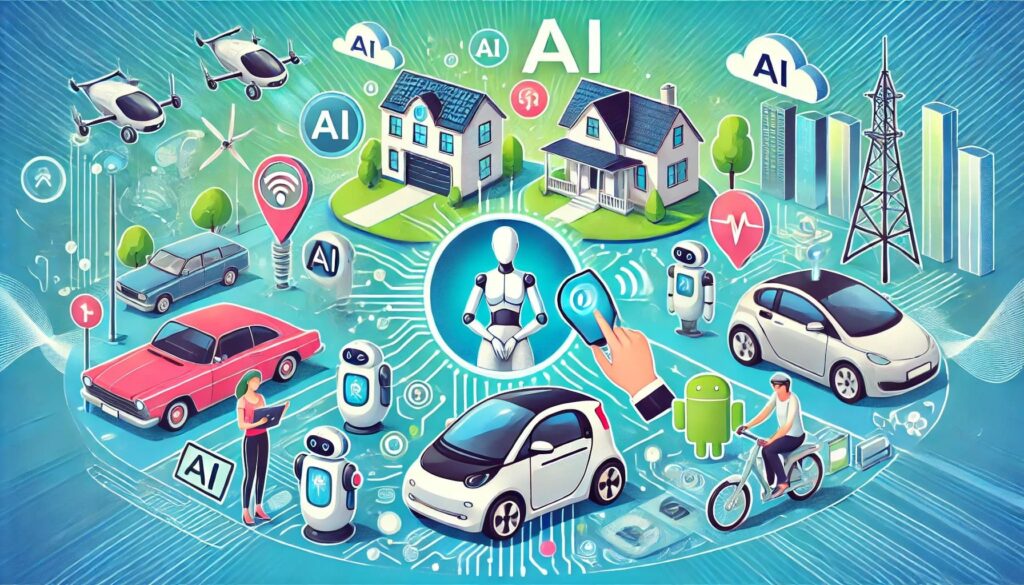
Virtual Assistants (Alexa, Siri, Google Assistant)
Virtual assistants, such as Alexa, Siri, and Google Assistant, are notable examples of AI in action.
These devices use advanced algorithms to recognize voice commands, answer questions, control smart devices, and assist with personal organization.
Imagine asking your assistant to turn on the lights, play your favorite music, or even remind you of an important appointment. These virtual assistants are designed to learn and adapt to your preferences, becoming increasingly efficient in performing everyday tasks.
Content Recommendation (Netflix, Spotify)
Another practical application of AI is content recommendation on platforms like Netflix and Spotify.
These platforms use AI algorithms to analyze your viewing and listening history, understand your preferences, and suggest new movies, series, and music that you are likely to enjoy.
This not only enhances the user experience but also keeps you engaged for longer periods.
The ability of AI to personalize recommendations makes consuming media more enjoyable and convenient.
Medical Diagnostics and Healthcare
In the healthcare field, AI is revolutionizing the diagnosis and treatment of diseases.
AI tools can analyze medical exams with impressive accuracy, helping doctors detect conditions like cancer at early stages.
Additionally, health apps use AI to monitor vital signs and provide real-time feedback, improving preventive care and the management of chronic diseases.
These advancements are making medical care faster, more accurate, and accessible to everyone.
The Impact of AI on the Job Market
Job Automation and New Opportunities
Artificial Intelligence (AI) is transforming the job market in surprising ways. On one hand, the automation of routine and repetitive tasks is replacing traditional jobs, raising concerns about mass unemployment.
Professions involving predictable tasks, such as machine operators and administrative assistants, are among the most impacted by automation.
However, this same automation is creating new opportunities in areas that require advanced skills and creativity.
According to studies, companies that adopt AI often reassign their employees to more complex and strategic roles instead of simply laying them off [7, 8].
Areas Most Affected by AI
The adoption of AI is impacting different sectors in various ways.
Manufacturing is seeing robotics and automation replace physical and repetitive tasks, while also creating demand for skilled technicians to maintain and program these machines.
The service sector is experiencing a shift with virtual assistants and AI-based customer service systems taking over traditional customer service roles, and simultaneously creating new positions for managing and enhancing these systems.
Healthcare is being revolutionized by AI in diagnostics and treatments, requiring professionals who can interpret complex data and make informed decisions based on advanced algorithms.
How to Prepare for the Future of Work
With the rapid evolution of AI, it is essential that workers and companies prepare for changes in the job market.
Investing in continuous education and training is crucial to develop skills that complement AI capabilities, such as creativity, complex problem-solving, and emotional intelligence.
Governments and educational institutions also play a critical role in creating reskilling and upskilling programs to help workers adapt to the new market demands.
Ethics and AI: Issues and Challenges
Privacy and Data Security Concerns
The use of artificial intelligence (AI) raises serious concerns about privacy and data security.
With the ability to analyze large volumes of personal information, AI can infringe on individuals’ privacy in unprecedented ways.
For instance, AI algorithms can be used for mass surveillance, analyzing data from security cameras and social networks to identify suspicious behavior, raising questions about the balance between security and privacy [9].
Additionally, cybersecurity is a significant concern, as AI systems can be vulnerable to attacks, resulting in leaks of sensitive data.
AI and Algorithmic Bias
Another critical ethical issue is algorithmic bias. AI algorithms are only as unbiased as the data they are trained on.
If the training data contains biases, the algorithms can perpetuate or even exacerbate these inequalities.
Studies have shown that AI systems used in hiring processes, loan approvals, and judicial decisions can discriminate based on race, gender, or other personal characteristics [9].
This highlights the need for greater transparency and accountability in how data is collected and used.
Regulations and Policies for Responsible AI
To address these challenges, it is essential to develop regulations and policies that ensure the responsible use of AI.
Implementing robust legal frameworks can help protect human rights and promote fairness and equity.
International organizations, such as the European Union, are working on guidelines to ensure that AI is developed and used ethically and responsibly.
This includes creating standards for algorithmic transparency, conducting regular audits, and ensuring that individuals have the right to contest automated decisions that significantly affect their lives.
Conclusion
AI offers numerous advantages but also brings with it ethical challenges that cannot be ignored.
To ensure that technological advancements benefit everyone fairly and safely, it is essential to address privacy concerns, mitigate algorithmic biases, and implement robust regulations.
Only through a collaborative effort between governments, companies, and society can we fully harness AI’s potential in an ethical and responsible manner.
References
- Fetzer, J. H. (1990). What is Artificial Intelligence? Studies in Cognitive Systems, 3–27. doi:10.1007/978-94-009-1900-6_1 . Available at (springer.com).
- Neelam, M. (2021). Aspects of Artificial Intelligence. In Karthikeyan, J., Ting, S.-H., & Ng, Y.-J. (Eds.), Learning Outcomes of Classroom Research (pp. 250-256). L’Ordine Nuovo Publication. Available at (link).
- McCarthy, J. What is Artificial Intelligence? Stanford University, 2004. Available at (unl.edu).
- Ninduwezuor-Ehiobu, T., Tula, O. A., Daraojimba, C., Ofonagoro, K. A., Ogunjobi, O. A., Gidiagba, J. O., … & Banso, A. A. (2023). Tracing the evolution of AI and machine learning applications in advancing materials discovery and production processes. Engineering Science & Technology Journal, 4(3), 66-83. Available at (link).
- Abbas, G. (2022). From Data to Decisions: Demystifying Analytics and Machine Learning for Beginners. Department of Computer Science, University of Unscramble. Available at (link).
- Ng, D. T. K., Leung, J. K. L., Chu, S. K. W., & Qiao, M. S. (2021). Conceptualizing AI literacy: An exploratory review. Computers and Education: Artificial Intelligence, 2, 100041. Available at: (ScienceDirect).
- Zarifhonarvar, A. (2024). Economics of ChatGPT: a labor market view on the occupational impact of artificial intelligence. Journal of Electronic Business & Digital Economics, 3(2), 100-116.
- Lane, M., & Saint-Martin, A. (2021). The impact of Artificial Intelligence on the labour market: What do we know so far? OECD Social, Employment and Migration Working Papers, No. 256, OECD Publishing, Paris.
- Rodrigues, R. (2020). Legal and human rights issues of AI: gaps, challenges, and vulnerabilities. Journal of Responsible Technology. Available at (link).

